Our skin is the most exposed part of our body, which makes it vulnerable to diseases such as eczema. One type of eczema is called dyshidrotic eczema, which is characterized by itchy and scaly skin on the palms of your hands or the sole of your feet.
The good news is that there are treatments available to help relieve the symptoms of this condition.
Table of Contents
What Is Dyshidrotic Eczema?
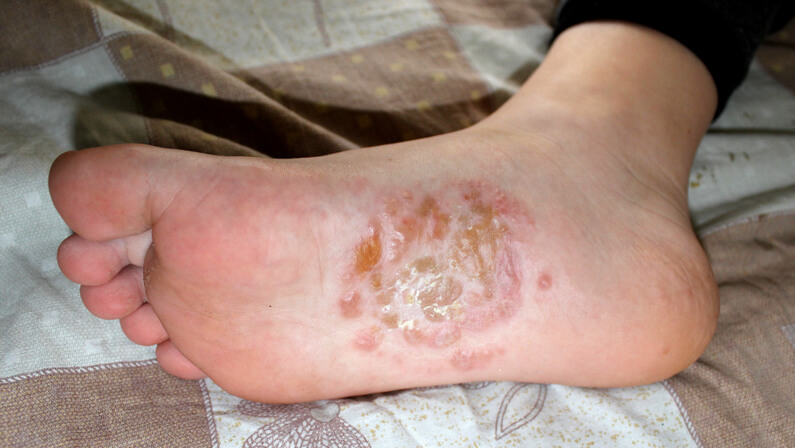
Dyshidrotic eczema, also known as pompholyx, is a type of eczema that affects the hands and feet. This condition is characterized by small blisters that appear on the palms of the hands and soles of the feet. These blisters can be extremely itchy and may cause the skin to become red and inflamed.
In some cases, dyshidrotic eczema may also cause crusted lesions to form on the skin.
Who is at risk for developing dyshidrotic eczema?
Dyshidrotic eczema can affect people of all ages, but it is most commonly seen in adults between the ages of 20 and 40. This condition is more common in women than in men.
People who have a family history of eczema or other skin conditions are also at increased risk for developing dyshidrotic eczema.
What Causes Dyshidrotic Eczema?
According to the National Eczema Association, the exact cause of dyshidrotic eczema is unknown. However, there are several factors that may contribute to the development of this condition, including:
- Stress: People who are under a lot of stress are more likely to develop dyshidrotic eczema.
- Allergies: People with allergies or sensitivities to certain substances may be more likely to develop this condition.
- Weather: Hot and humid weather can trigger an outbreak of dyshidrotic eczema.
What are the symptoms of dyshidrotic eczema?
The most common symptoms of dyshidrotic eczema are:
- Blisters: Small blisters may form on the palms of the hands and soles of the feet. These blisters may be itchy or painful.
- Crusted lesions: In some cases, crusted lesions may form on the skin.
- Red and inflamed skin: The skin may become red and inflamed due to scratching or irritation.
If you experience any of these symptoms, it is important to see a doctor or dermatologist for proper diagnosis and treatment.
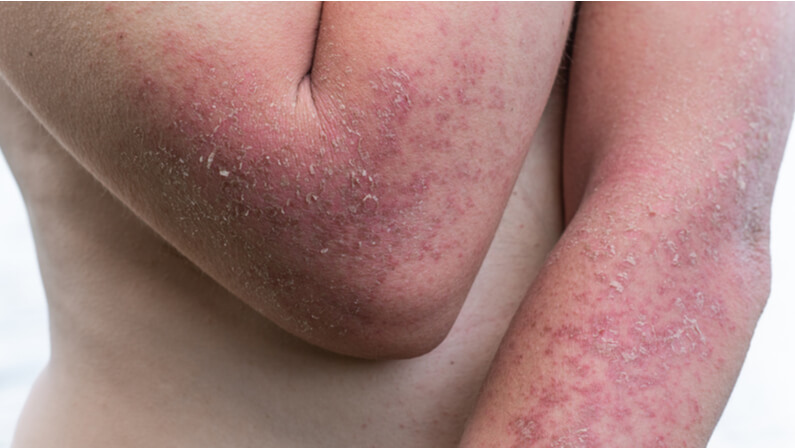
How is dyshidrotic eczema diagnosed?
A doctor or dermatologist can usually diagnose dyshidrotic eczema based on a physical examination of the skin. In some cases, a skin biopsy may be necessary to confirm the diagnosis.
The diagnosis is usually made based on the following criteria:
- The presence of blisters on the palms of the hands and soles of the feet.
- Itching or pain in the affected area.
- Red and inflamed skin.
Once the diagnosis is made, the doctor will develop a treatment plan to help relieve the symptoms of dyshidrotic eczema.
How Long Dyshidrotic Eczema Last?
The length of time that dyshidrotic eczema lasts can vary from person to person. In some cases, the condition may go away on its own. However, in other cases, the symptoms may persist for months or even years.
How is dyshidrotic eczema treated?
There is no cure for dyshidrotic eczema, but there are treatments available to help relieve the symptoms of this condition. The most common treatment options include:
Topical corticosteroids
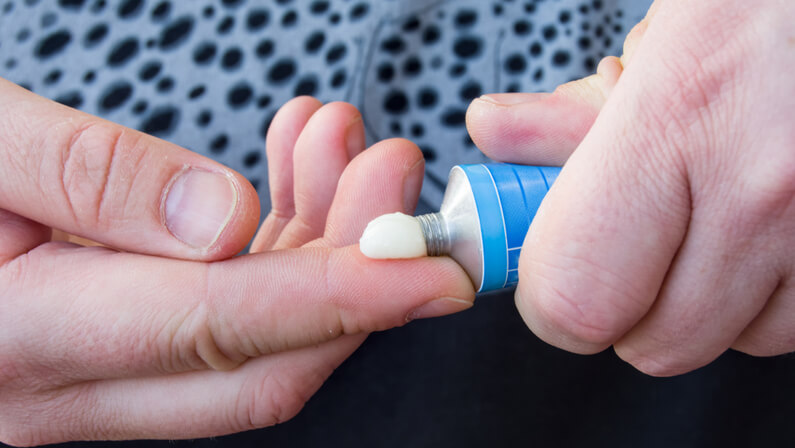
This type of medication for eczema is available as a cream, ointment, or gel. It is applied to the affected area of the skin to help reduce inflammation and itching.
Topical calcineurin inhibitors (TCIs)
This type of medication for eczema is available as a cream or ointment. It is applied to the affected area of the skin to help reduce inflammation.
Oral antihistamines
This type of medication can help relieve itchiness associated with dyshidrotic eczema.
Phototherapy
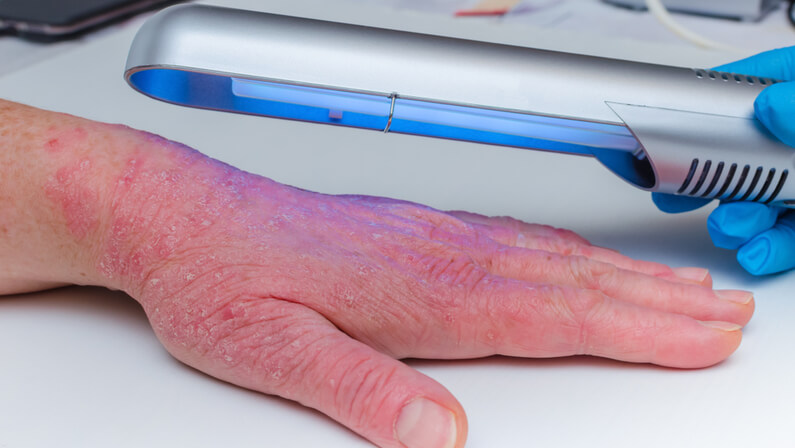
This treatment involves exposure to ultraviolet light under medical supervision. This light can help reduce the symptoms of dyshidrotic eczema.
Biologics
Pharmaceutical medication that calms the immune system, easing inflammation, normally in the form of an injection.
Systemic Immunomodulators
Medications that weaken your immune system prevent it from overreacting. This will lessen itching to promote healing.
PDE4 Inhibitor
Prescription topical medication that diminishes inflammation to allow the skin to have a normal appearance.
Home remedies for dyshidrotic eczema
Although an appointment at the doctor’s office is necessary to get an official diagnosis, there are some home remedies that may help relieve the symptoms of dyshidrotic eczema.
These home remedies include:
- Bath/shower in Lukewarm water to prevent dryness
- Cold compress: Applying a cold compress to the affected area can help reduce inflammation and itching.
- Avoid triggers: If you know what triggers your eczema flare-ups, it is important to avoid these triggers. Common triggers include stress, hot weather, and harsh chemicals.
- Moisturize regularly: Keeping the skin moisturized is important for people with eczema. This can help prevent dryness, cracking, and irritation.
- Wearing loose-fitting clothing: Clothing that is tight or made of rough materials can irritate the skin and trigger a flare-up of eczema symptoms. It is important to wear loose-fitting, soft clothing to help prevent irritation.
If home remedies are not providing relief, it is important to see a doctor for further treatment options. Dyshidrotic eczema can be a frustrating condition, but there are treatments available to help provide relief from the symptoms.
With proper diagnosis and treatment, most people are able to manage their condition and live relatively normal lives.
Complications of dyshidrotic eczema Flare-ups
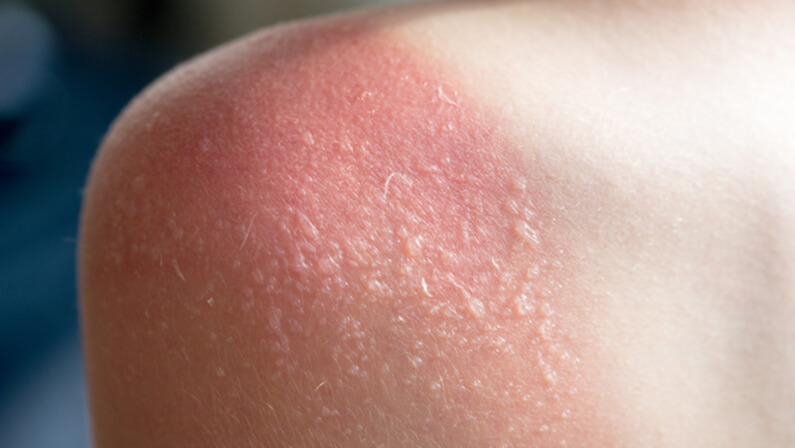
When not treated properly, dyshidrotic eczema can lead to complications.
These complications include:
- Secondary infection: If the blisters associated with dyshidrotic eczema break open, this can allow bacteria to enter the skin and cause an infection. Symptoms of a secondary infection include redness, swelling, and pus drainage.
- Allergic contact dermatitis: This condition occurs when the irritant or allergen that is triggering the eczema flare-up comes into direct contact with the skin. This can cause symptoms such as itching, redness, and swelling.
How to Prevent Dyshidrotic Eczema
There is no sure way to prevent dyshidrotic eczema, but there are some things that may help reduce your risk of developing this condition.
These things include:
- Wear cotton gloves when you are exposed to irritants such as detergents, soaps, and cleaning products.
- Avoid exposure to things that trigger your eczema flare-ups.
- Keep your hands and feet moisturized.
- Use mild soaps and avoid harsh chemicals.
Be Aware of Dyshidrotic Eczema Today!
If you have dyshidrotic eczema, it is important to take steps to prevent the condition from getting worse. This includes avoiding triggers, keeping the skin moisturized, and using mild soaps.
Moreover, if home remedies are not providing relief, it is important to see a doctor for further treatment options. With proper diagnosis and treatment, most people are able to manage their condition and live relatively normal lives.
We at Team Dermatology are here to help! If you have any questions or concerns about dyshidrotic eczema, please do not hesitate to contact us today! Our team of experts will be more than happy to help you find the answers and relief you need.


